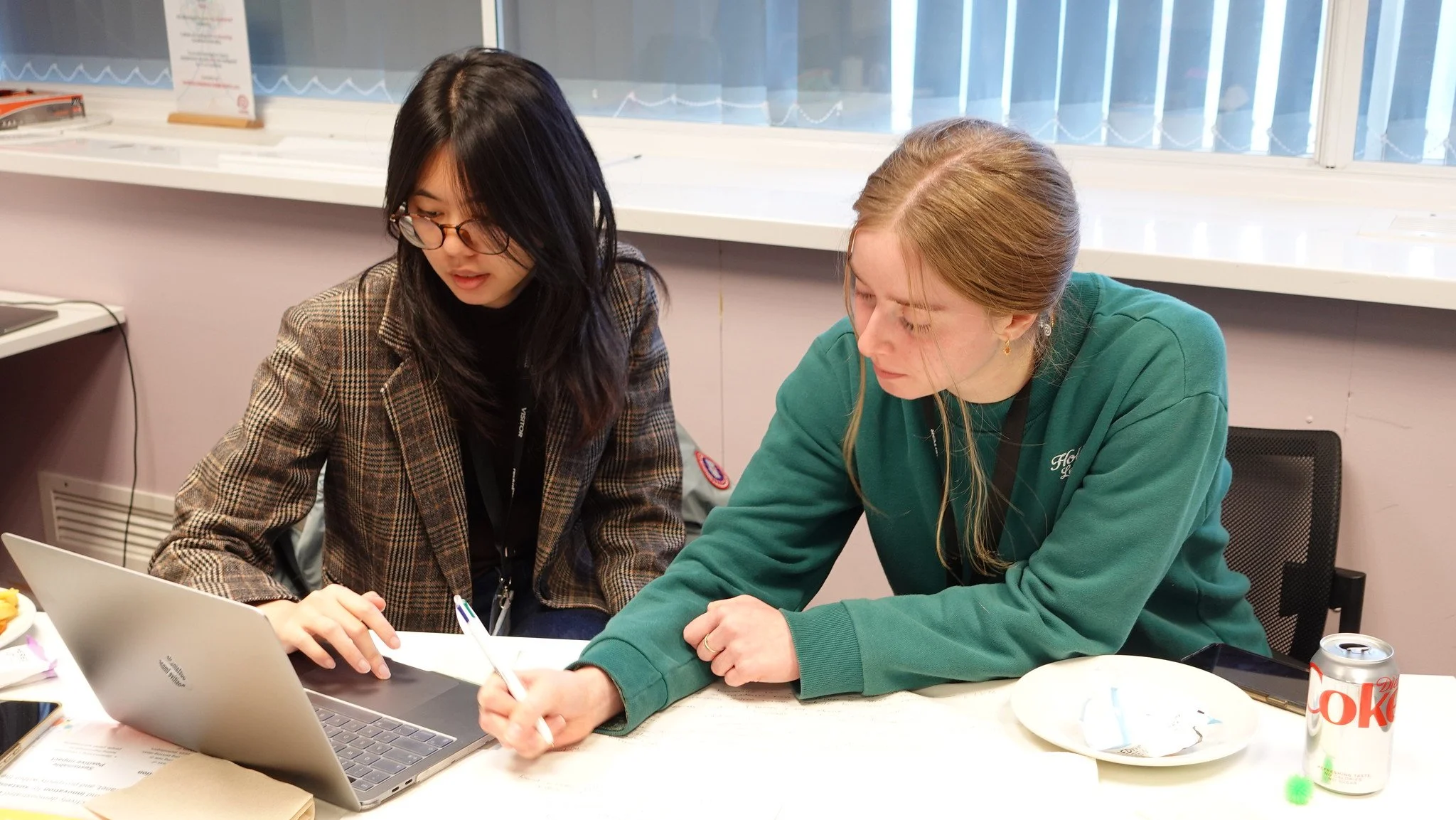
Summer Sprint: Accelerating Impact
Week 3: Build, Test & Iterate
Catch Up & Recap
In Week 3, you’ll be bringing everything together:
Building Your Project Plan: Using the Social Impact Canvas, you’ll map out your goals, actions, and resources into a clear plan.
Testing Your Ideas: Start testing elements of your project (small, low-risk tests are ideal!) to see what works in practice.
Gathering Feedback: Learn how to collect feedback from beneficiaries, mentors, and peers to refine your approach.
Iterating & Strengthening: Use what you’ve learned to improve your plan and ensure it’s ready for implementation.
Measuring Impact: Begin defining clear metrics to track whether your project is on course to achieve its intended change.

Project Planning – The Blueprint for Impact
A strong project plan is essential to ensure your idea moves forward successfully. It helps you:
Map your impact – Define the change you want to create
Visualize your success – Break your vision into achievable steps
Build an action plan – Identify key milestones and resources
Share your vision – Clearly communicate your objectives to stakeholders
Social Impact Canvas
The Social Impact Canvas is a tool designed to help you:
✔ Understand the social change you want to create
✔ Develop a clear blueprint for success
✔ Identify key performance indicators to track progress
✔ Outline steps needed to maximise impact
✔ Communicate your goals to funders, partners, and stakeholders
How to Use the Social Impact Canvas:
1️⃣ Define Your Impact – What long-term change are you working toward?
2️⃣ Identify Key Outcomes – What measurable differences will your project make?
3️⃣ Establish Indicators – How will you track success and measure your progress?
4️⃣ Plan Your Strategy – What specific actions will you take to achieve your outcomes?
Learning to Build the Plane While Flying It
At Enactus, we embrace the mindset of "building the plane while flying it". While you need a structured plan, you must also be flexible and adaptive.
Your Roadmap to Success:
Start with Your "Why" – What is your guiding mission? What change do you want to see?
Embrace Iteration & Adaptation – Your project will evolve; build flexibility into your approach.
Engage Your Stakeholders – Who are your key partners? How can they support your journey?
Focus on Measurable Impact – What data will help you prove your success?
Resource Strategically – What do you need to keep your project running?
Build a Strong Team – Who will help you execute your vision?
💡 Tip: Break your project into manageable phases and set small milestones along the way to keep things moving!
Why Does Measuring Impact Matter?
Measuring your project’s impact isn’t just about numbers—it’s about proving the real-world change your project is making. It helps with:
Accountability & Transparency
Shows your real value to stakeholders (funders, universities, communities and competition judges)
Builds trust and credibility with partners and supporters
Continuous Improvement
Helps you identify strengths and weaknesses
Supports data-driven decision-making to refine your strategy
Learning & Growth
Helps share best practices with other teams
Inspires others to get involved or support your project
The Enactus Judging Criterion & Impact Measurement
Your project will be assessed based on:
✅ Needs Assessment – Are you addressing a real, significant problem?
✅ Business Principles – Are you applying entrepreneurial action?
✅ Innovation – What makes your project unique?
✅ Vision Sharing – How well do you communicate your project?
✅ Sustainability – Can your impact be sustained and measured over time?
How does this relate to impact measurement?
To score well, you’ll need clear evidence of your project’s viability and the impact it has the potential of creating, this could be backed by data and real-world examples.
Types of Impact
Direct Impact
➡ Measurable improvements among individuals directly involved in your project.
✅ Example: 50 people attended your financial literacy workshops and reported increased knowledge.
Indirect Impact
➡ Benefits experienced by those who didn’t directly participate but were influenced.
✅ Example: Families of workshop participants also adopt better financial habits.
Projections
➡ Future possibilities and goals (not yet achieved).
✅ Example: “We aim to reach 500 participants in the next year.”
Setting Your Impact Goals
Use this framework to set SMART Impact Goals:
✅ Specific – What exactly are you measuring?
✅ Measurable – How will you track progress?
✅ Achievable – Is your goal realistic?
✅ Relevant – Does it align with your project’s mission?
✅ Time-bound – By when will you achieve it?
Example SMART Goal:
"By the end of the year, we will train 20 unemployed young people in digital skills, with at least 70% securing a job or internship within six months.
Feedback Analysis Matrix
The Feedback Analysis Matrix is designed to help you collect feedback from different sources (beneficiaries, coaches, peers, mentors) and turn it into actionable insights to strengthen your project.
Step 1: Capture the feedback you receive in a structured way
Step 2: Identify Patterns
After logging feedback, look for recurring themes:
Are multiple people pointing to the same issue or need?
Do beneficiaries say something different than coaches/mentors?
Are there conflicting opinions you need to weigh?
Use a summary box for this:
🔑 Key Patterns Identified:
Example: “Many beneficiaries mentioned accessibility and time constraints.”
Example: “Coaches suggested refining the business model before expanding reach.”
Step 3: Prioritisation Matrix
Not all feedback is equal! Use this to decide what to act on first.
Create a 2x2 Matrix:
Axis 1: Impact (High vs Low) – Will this feedback significantly improve our project or its impact?
Axis 2: Ease of Implementation (Easy vs Difficult) – How easy is it to address this feedback?
Plot feedback items in the matrix:
Quick Wins: High impact, easy to do → Act on immediately.
Major Projects: High impact, harder to do → Plan strategically.
Low Impact Tasks: Do if time allows.
Avoid: Low impact, hard to do → Not worth focus now.
Step 4: Action Plan
For high-priority feedback, create an action plan:
Section 5: Reflection & Learning
Close the loop by reflecting on:
What surprised you in the feedback?
What confirmed your assumptions?
How has this changed your plan?
This reinforces the Plan → Test → Learn → Adapt iteration cycle.






